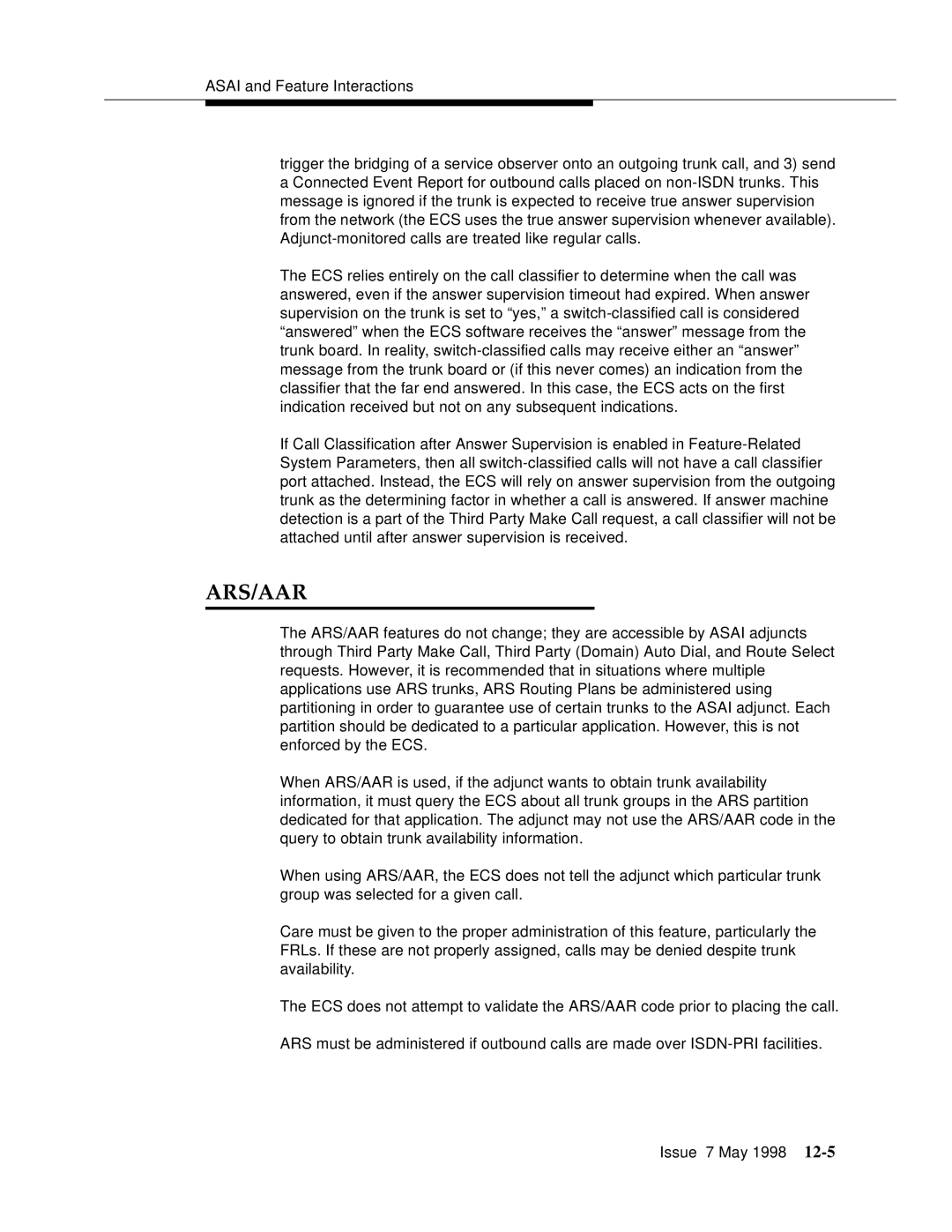
ASAI and Feature Interactions
trigger the bridging of a service observer onto an outgoing trunk call, and 3) send a Connected Event Report for outbound calls placed on
The ECS relies entirely on the call classifier to determine when the call was answered, even if the answer supervision timeout had expired. When answer supervision on the trunk is set to “yes,” a
If Call Classification after Answer Supervision is enabled in
ARS/AAR
The ARS/AAR features do not change; they are accessible by ASAI adjuncts through Third Party Make Call, Third Party (Domain) Auto Dial, and Route Select requests. However, it is recommended that in situations where multiple applications use ARS trunks, ARS Routing Plans be administered using partitioning in order to guarantee use of certain trunks to the ASAI adjunct. Each partition should be dedicated to a particular application. However, this is not enforced by the ECS.
When ARS/AAR is used, if the adjunct wants to obtain trunk availability information, it must query the ECS about all trunk groups in the ARS partition dedicated for that application. The adjunct may not use the ARS/AAR code in the query to obtain trunk availability information.
When using ARS/AAR, the ECS does not tell the adjunct which particular trunk group was selected for a given call.
Care must be given to the proper administration of this feature, particularly the FRLs. If these are not properly assigned, calls may be denied despite trunk availability.
The ECS does not attempt to validate the ARS/AAR code prior to placing the call.
ARS must be administered if outbound calls are made over
